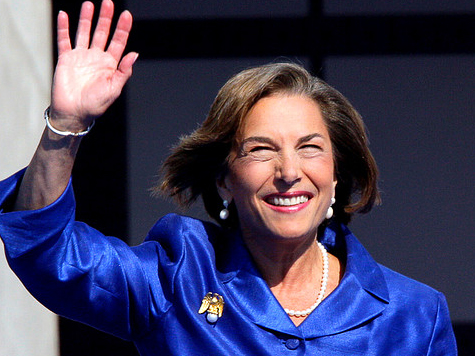On Thursday, March 29, on Ed Schultz’s left-wing radio show, Rep. Jan Schakowsky (D-IL) referred to the killing of Trayvon Martin on Feb. 26 as a “modern-day lynching.” The host, apparently, did not correct her.
Schakowsky evidently doesn’t know much about the history of the civil rights movement, and some of her colleagues on the left seem to have forgotten as well, so let’s briefly consider what lynching was.
Lynching was a phenomenon primarily occurring in the southern United States in which victims, usually but not exclusively black men, were killed by mobs, often after being humiliated, tortured, and mutilated.
Often–not always, and often wrongly–the victim had been accused of a crime against a white person. Rather than waiting for the legal and judicial systems to act, lynch mobs took matters into their own hands–brutally.
Though lynchings were gradually suppressed, they occurred well into the second half of the twentieth century, and were a means of enforcing the racist social order that the civil rights movement so bravely confronted.
Now let’s consider the following hypothetical case.
A white teenager is killed in a Southern town. The man who shot him calls police and says he acted in self-defense. He is taken into custody, but freed after prosecutors decide there is not enough evidence to charge him.
Ten days later, the man is referred to as “black” in a news report–incorrectly, as it turns out–and there is suddenly broader interest in the case. Protests are held outside the police station, demanding the man’s arrest.
The protests grow as prominent white political and religious leaders demand that the police take action. At least one of the people leading the effort has a history of inciting racist mobs and making false allegations.
A white supremacist group announces a bounty for the man, who is in hiding. A white movie director publishes what he thinks is the man’s address (he is wrong, and an elderly couple flees their home in fear).
The state begins a new investigation into the case. There are still no charges, but activists and journalists call for the arrest of the black man “for his own safety,” and draw attention to his race in protests and broadcasts.
The President, instead of calming public outrage, adds to it by pointing out that the white boy who died looked like the son he never had. Justice becomes impossible, since the president has poisoned the jury pool.
The incitement continues, with some calling for the black man to be killed, not arrested. And the accused man, who may or may not be guilty of a crime, dare not return home. He will live in fear for the rest of his life.
That is the classic pattern of a lynch mob. And it resembles events in the Trayvon Martin case–except the victim was black, and the man who killed him, George Zimmerman, has been described, incorrectly, as white.
A lynching is not defined by the race of the victim–there were white victims, too–but by the decision of a mob to take the law into its own hands, beyond the justice system, while leaders do nothing–or encourage it.
“Lynching,” with its painful historic connotations, is a term to be avoided. But if Rep. Schakowsky wants to talk about a “modern-day lynching,” it seems only fair to remind her which side of the “lynch mob” she is on.

COMMENTS
Please let us know if you're having issues with commenting.